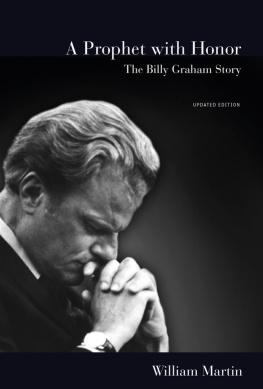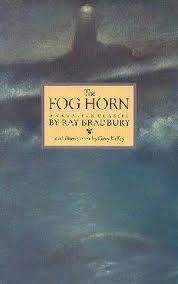This edition is published by PICKLE PARTNERS PUBLISHINGwww.picklepartnerspublishing.com
To join our mailing list for new titles or for issues with our books picklepublishing@gmail.com
Or on Facebook
Text originally published in 1926 under the same title.
Pickle Partners Publishing 2015, all rights reserved. No part of this publication may be reproduced, stored in a retrieval system or transmitted by any means, electrical, mechanical or otherwise without the written permission of the copyright holder.
Publishers Note
Although in most cases we have retained the Authors original spelling and grammar to authentically reproduce the work of the Author and the original intent of such material, some additional notes and clarifications have been added for the modern readers benefit.
We have also made every effort to include all maps and illustrations of the original edition the limitations of formatting do not allow of including larger maps, we will upload as many of these maps as possible.
THE STORY OF THE LITTLE BIG HORN CUSTERS LAST FIGHT
by
Lieut.-Col. W: A. Graham
Judge Advocate, U. S. Army
A Civil War portrait of Bvt.-Major-General George A. Custer, Lieutenant-Colonel in command of the Seventh Cavalry at the Little Big Horn.
Sitting Bull, the Hunkpap Sioux medicine-man, the leader of the hostile Sioux in 1876.
INTRODUCTION
In the summer of 1866 the Congress of the United States, after much discussion, reorganized and enlarged the fighting force of the regular army, the cavalry and infantry being increased respectively to ten regiments where there had been but six, and forty-five battalions where numerically there had been but nineteen.
Though the entire array was not to exceed 45,000 men, this startling extravagance was speedily assailed by pacifists, economists, etc., as utterly unnecessary, now that the war was over; and it followed that within three remorseful years the builders of what was to have become the bulwark of our national defense were as busy tearing down as they had been precipitate in bracing up, and in the summer of 1869 officers by scores went back to civil life as the infantry was telescoped into twenty-five old-style regiments, a years pay being bestowed on each man thus eliminated: and as this process did not of itself bring about the desired reduction, certain devious and dubious methods were prescribed, whereby officers with shady pasts (and quite a few without) found themselves suddenly and summarily out of the army, turned loose upon a cold and unsympathetic world.
As it had been prescribed that all vacancies thus created in the cavalry and artillery should be filled from what had been named the unassigned list, promotion became blocked for more than a generation.
And still the reduction fell short of the demands of Congress, even, as was said in a certain summer, with such aid as was afforded by our all-too-eager red brothers, the warriors of our Western domain. Far to the south on the Texan border-land Kiowa and Comanche afforded many a casualty. In Arizona the elusive Apache clipped off many a promising life. All along the cross-bordered Smoky Hill route to Denver, the Cheyennes, fiercest of the wild frontier cavalry, harassed the big wagon trains headed and heralded as for Pikes Peak or Bust; and still farther north, along the Platte to Independence Rock and beyondthe old Mormon trail to the new Salt Lake cityseveral thousand strong, the warlike Sioux, under their warrior chief Red Cloud, played havoc with unguarded outfits.
It was this condition of affairs that induced the Congress to maintain in such undue proportion the cavalry branch of the army. It was a fact that while many a blanket in the artillery and infantry remained tenantless, the cavalry rode with full ranks. There was a time when it was asserted that at the heels of certain favored and favorite regiments, there followed, by the dozen, eager and adventurous spirits, young men of American parentage, ready and eager to sign enlistment papers the moment a vacancy occurred. It is another fact that while four fifths of our horsemen were stationed all over the wild West and Texas, one fifth, just two regiments, were retained in close touch with civilizationthe Fifththe old Second Cavalry of antebellum days, and the Seventh, newly organized, yet already leaping into martial prominence.
Quartered in and about the city of Washington and the slowly reviving municipalities of the Southeast, the Fifth Cavalry was scattered by troop over the most attractive sections of the country, while the Seventh occupied stations like Forts Leavenworth and Riley in Kansas, under the inspiration, guidance, and leadership of their lieutenant-colonelthe most conspicuous soldier of the time in the army of the United States.
George Armstrong Custer, foot of his class at West Point and so regardless of academic regulations that it became a mooted question in the spring of 1861 whether or not he should be awarded the prized diploma. So, while his classmates were hurried away to Washington and set at once to work drilling the rapidly assembling regiments of militia, Custer was held back. But Custers luck, a commodity in which he ever expressed supreme confidence, soon directed his wayward footsteps. He followed on in time to get into the thick of the scrimmage at First Bull Run, and thereafter by leaps and bounds, to rise from one command to another, to the end that by July, 1863, he rode at the head of the new Michigan brigade of cavalry, and in the spring of 65 was a division commander.
It was in the nine days from Five Forks to Appomattox that Custer was in his glory. Leader of the Third Division of the Cavalry Corps of the Army of the Potomac, which swore by him, clad in a picturesque garb of his own devising, bestriding a big mettlesome charger as full of energy and vim as was its rider, he hovered every mile along the southward flank of the retiring remnants of Lees heroic army, darting in at every cross-road, picking off flankers, stragglers, wagons by the dozen, even occasional field-guns and caissons, giving the starving columns no chance to eat, much less to sleep, striking everywhere along the line of march, interposing wherever he found a gap, compelling his adversary to halt and deploy, thereby delaying the progress of the gray columns and enabling the infantry of the Army of the Potomac to come striding along by every parallel road, gradually overhauling their gallant but exhausted foemen, capturing whole batteries of field-artillery, and finally, in one supreme effort, throwing his entire division athwart the Confederate front, and compelling a dead halt until the Union infantry could reach the extreme head of the column, reach around and across the turnpikes and roads, and finally, screened by Custers cavalry, halt their long dusty columns and form their lines of battle facing eastwardsquare across the Confederates only way to safety.
Thus and then at last the almost indomitable army of the South was brought to bay, and Lees dramatic surrender followed. It was Custer who had the luck to be in the lead at the start and to hold it against all comers to the finish; Custer who led the last charge of Sheridans cavalry (against that South Carolina colonel who wouldnt surrender); Custer who bore away in triumph the table on which Grant had drawn up the terms of that merciful disbandment of Lees devoted men; Custer, whose runaway charger made him by long odds the most conspicuous object at the grand review in Washington; Custer whose yellow curls and major-generals uniform in the fourth carriage of the presidential procession, one year later, drew the enthusiastic plaudits of the crowds along their routecrowds that had not so much as a single hand or cheer for Andrew Johnson, chief magistrate of the victorious Union; and finally Custer who became the magnet that lured to his standard hundreds of daring young Americans; for when the Seventh Cavalry took the field against the hostiles of the southern plains, Custer at the head of the column, it was practically an American regiment, one in which the soldier of foreign birth was almost a stranger. The roster of the Seventh Cavalry was made up in greater numberprobably far greaterthan any other in the army of the United States, of eager young troopers, American to the core.









